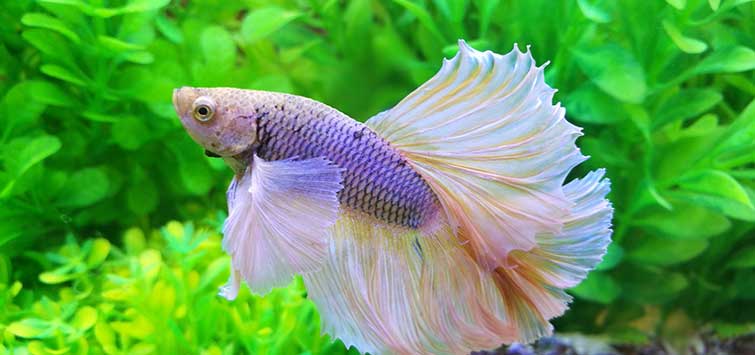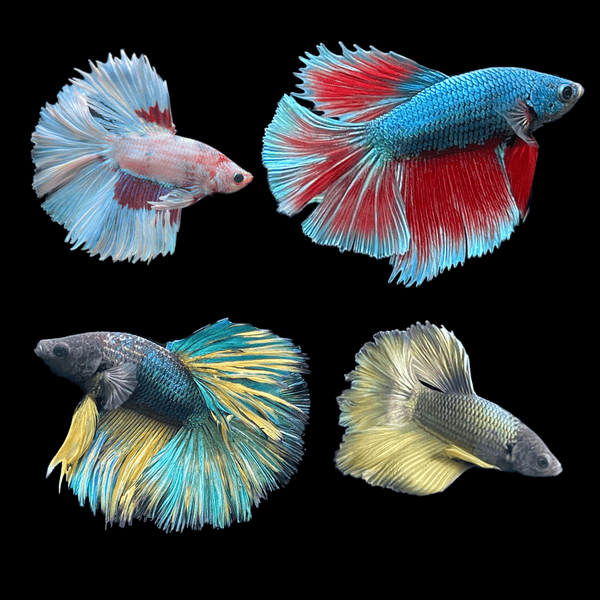Betta Fish Care: Vital Tips for a Healthy and Happy Pet Dog
Betta Fish Care: Vital Tips for a Healthy and Happy Pet Dog
Blog Article
Breeding Betta Fish: a Comprehensive Step-By-Step Overview to Successfully Raising Baby Bettas From Eggs to The Adult Years
Breeding Betta fish is a meticulous undertaking that needs cautious planning and implementation to make sure the successful development of fry from eggs to mature fish. Picking genetically varied reproduction pairs with preferable attributes is only the start; developing an optimal setting and understanding the complexities of the reproducing procedure are just as critical. As the male Betta diligently constructs a bubble nest and guards the precious eggs, the subsequent phases of care and change demand interest to detail and knowledge of best practices. How does one browse the challenging yet satisfying course of nurturing these vibrant animals to their adult years?

Picking Reproduction Pairs
When starting the journey of breeding Betta fish, picking the ideal breeding sets is essential to attaining desirable attributes and a healthy and balanced lineage - betta fish. The very first step in this procedure is to determine the details qualities you want to boost or protect, such as shade, fin kind, and physique. It is essential to pick genetically diverse sets to avoid inbreeding, which can lead to health problems and unwanted features
Examine possible breeding prospects thoroughly. A healthy male Betta should exhibit lively shades, an active temperament, and well-formed fins, while the female must also display vivid pigmentation and a rounded stomach, showing readiness for spawning. Observing the personality of both fish is vital, as hostile or excessively reluctant individuals may not breed successfully.
Paperwork of lineage is similarly essential. Maintaining records of the parent fish's origins can help you track hereditary characteristics and potential issues. Furthermore, get in touch with trusted dog breeders or online resources for assistance on picking compatible pairs. Ultimately, investing time in the option procedure will dramatically enhance the chance of creating strong, dynamic offspring that satisfy your reproduction goals (betta fish).

Preparing the Reproduction Tank
Producing an ideal breeding atmosphere is a crucial step after selecting ideal sets for Betta fish. The reproduction storage tank ought to be specifically developed to supply comfort and promote the all-natural breeding actions of the fish. Begin with a tank size of at the very least 10 gallons to make certain sufficient area for both the man and female Bettas.
Maintain a mild filtration system to maintain the water tidy while staying clear of solid currents that can stress the fish. In addition, an air stone can be included in supply oxygenation without disrupting the water surface area too much.
Temperature level regulation is essential; purpose for a stable series of 78-82 ° F(25-28 ° C) using a trustworthy heater. The pH degree need to be maintained between 6.5 and 7.5, and regular water adjustments are needed to make certain high water high quality.
Integrate drifting plants or spawning sponges to develop hiding places for the female, while additionally encouraging bubble nest structure by the male - betta fish. Guarantee the storage tank is free from sharp decors and any type of possible risks, as the well-being of the fish need to always be focused on throughout this crucial phase of breeding.
The Breeding Process
Generally, the breeding procedure for Betta fish entails a series of unique and observable actions that show readiness for reproduction. The male Betta begins by constructing a bubble nest at the water's surface area, which functions as a website for the fed eggs. This nest is crucial, as it provides a risk-free environment for the eggs until they hatch out.
When the nest is established, the man will show courtship actions, such as More Help flaring his fins and displaying lively shades to draw in the lady. The woman, upon sensing the male's readiness, will respond by showing upright red stripes along her body, signaling her receptiveness.
When the female methods, the male participates in a breeding dancing, often causing an accept called the "spawning." During this embrace, the woman releases her eggs, which the male feeds quickly. The fertilized eggs then drop to the bubble nest, where the male very carefully accumulates and returns them to the nest. Following this, the male presumes obligation for protecting the nest and making sure the safety of the eggs until they hatch, generally within 24-36 hours. This stage is crucial in the breeding procedure, laying the foundation for successful fry development.
Taking Care Of Betta Fry
Taking care of Betta fry needs careful focus to their environment and nourishment to make sure healthy growth and growth. After hatching, Betta fry are incredibly small and at risk, necessitating a secure and tidy habitat. Keeping a water temperature in between 78 ° F and 80 ° F is essential, as Betta fry thrive in warm conditions. In addition, make certain that the water is without hazardous contaminants; routine water changes of 10-20% are recommended to maintain optimum water quality.
Feeding Betta fry is just as crucial. They ought to be provided infusoria or finely smashed high-grade fry food, as their mouths are also small to deal with larger fragments. As they expand, you can gradually present bigger foods, such as infant brine shrimp or powdered flakes, to ensure they receive adequate nutrition. Feed them percentages several times a day, taking care not to overfeed, which can lead to water top quality issues.
Transitioning to Adult Bettas
As Betta fry fully grown, transitioning them to adult Bettas is an essential phase that calls for careful monitoring of their environment and social communications. This process normally starts when the fry get to around 6 weeks of age, whereupon they can be slowly introduced to a much more organized living environment.
To facilitate this transition, it is necessary to make certain that the water criteria-- such as temperature level, pH, and ammonia levels-- are optimum and steady. Grown-up Betta fish flourish in cozy water (around 78-80 ° F) with a pH of 6.5 to 7.5. Slowly acclimate the fry to these problems to minimize stress.
Social communications are one more vital factor; male Bettas are notoriously territorial and hostile. It is advisable to different males into specific tanks as they grow. Women Bettas can be housed with each other, yet treatment must be taken to keep track of for signs of hostility.
In addition, nutritional adjustments ought to be made as the fry expand. Include premium pellets and live foods to check here sustain their growth and health. By handling these aspects effectively, you can advertise a successful shift to the adult years for your Betta fish.

Conclusion
Effective reproduction of Betta fish requires careful focus to detail throughout the entire procedure, from choosing genetically diverse sets to providing optimum treatment for fry. Furthermore, a well balanced diet and gradual informative post adaptation to adult environments are crucial for the growth and advancement of Betta fish.
Report this page